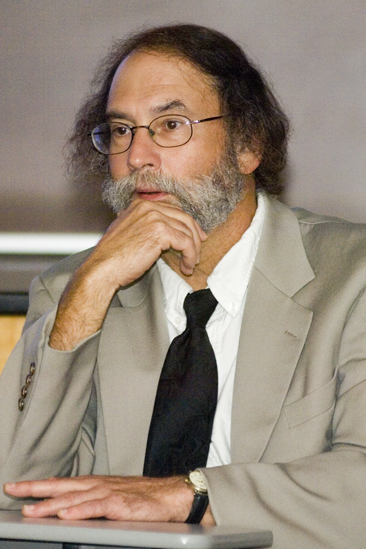Professor to examine growth of Islamic extremism in prison
September 28, 2006
An Indiana State University professor who has studied domestic and international terrorism for nearly two decades is turning his attention to what may seem an unlikely breeding ground for terrorists – state and federal prisons.
An estimated 175,000 inmates of American correctional facilities have converted to Islam since the terrorist attacks of Sept. 11, 2001, making Islam the fastest-growing religion behind bars. While many are legitimate religious experiences, officials are concerned about those who may be drawn to particularly radical jihadist viewpoints.
Under contract with the National Institute of Justice, criminology Professor Mark Hamm plans to interview prison chaplains and others close to such jailhouse conversions in an effort to assess the national security implications.
One of the first facilities Hamm hopes to look at is California’s legendary Folsom prison. An inmate at Folsom is suspected of hatching a plot to bomb military facilities, an Israeli consulate, and the El Al airline counter at Los Angeles International Airport.
Believed to have been scheduled for Sept. 11, 2005, the plot was foiled – but only after the inmate was paroled and recruited help in robbing several gas stations to finance the operation, Hamm said.
State and federal prisons in the United States house an estimated 2.2 million inmates. Another 6.6 million people pass through local jails each year. Many such individuals are disaffected young males who may be receptive to radical Islamic views, Hamm says.
“You’ve got dozens of terrorists from al-Qaida incarcerated in American prisons, mixed in with other prisoners. What is the potential of that group to, in turn, proselytize other men, other prisoners, into some sort of jihad group that organizes at the prison level?” Hamm asks, listing as an example one of the most famous terrorists of the 20th century.
“Carlos the Jackal converted to Islam at the age of 26, right before his most spectacular act of terrorism, the taking of hostages at the OPEC conference in 1975,” Hamm noted.
Hamm believes so-called “self starter” groups of impoverished young people, which could be organized in prisons, now pose a greater risk than the al-Qaida organization currently based in Afghanistan and Pakistan. . Those responsible for terrorist attacks on Jewish targets in Casablanca, Morocco, in 2003; the Madrid train bombing in 2004; and the London bus bombings of 2005, were all “self-starters,” he notes.
While some of those involved in the bombings have claimed allegiance to Osama bin Ladin, they are not believed to have taken orders from al-Qaida.
“These are young men who came up out of local neighborhoods and met, not in training camps in Afghanistan or Pakistan, but in gymnasiums, bookstores, barbershops and prison. They met in small informal gatherings, much like the left wing terrorists of the 1970s. They were connected not so much by their ideology, but the fact that they hung out in the same bar or that they came from the same university,” Hamm says.
“Very similar things are going on now with international jihad groups. One of those areas that people are most concerned about, in terms of these informal gathering places, are prison cellblocks, prison classes, yards, recreation areas, prison chapels. My research is going into these prisons and interviewing chaplains, gang intelligence officers and prisoners who’ve undergone a conversion to either Islam or some other non-Judaic Christian faith.”
Most of the limited research previously conducted on jailhouse conversion to Islam suggests it is a bona fide religious experience that contributes to prison stability, Hamm says, noting that one of the most famous jailhouse conversions in history was by Malcolm X, who went on to be a positive role model for future generations of African-Americans.
But Malcolm X was from a different era – before planes were hijacked and deliberately flown into buildings, and before the United States became entangled in a difficult war in Iraq.
The suicide bombings of 2003 through 2005 in Casablanca, Madrid and London each involved retaliation against American involvement in Iraq, Hamm notes. Whatever the findings of his research into prison conversions to Islam, Hamm believes good old-fashioned police work remains the best way to fight terrorism.
The plot hatched in Folsom prison was undone “not by the Patriot Act, not by some National Security Agency wiretapping, or any sort of very intrusive actions by the state,” Hamm notes. “It was foiled because one of the robbers left his cell phone on the floor of a gas station. A local police officer ran a check on that cell phone. They had the guy in custody within 24 hours and broke up the entire plot.”
Hamm’s theory is to look at those precursor crimes. “Go after those and you may interrupt a larger plot designed to kill thousands.”
Contact: Mark Hamm, professor of criminology, Indiana State University, (812) 237-2197 or Mark.Hamm@indstate.edu
Writer: Dave Taylor, media relations director, Indiana State University, (812) 237-3743 or dave.taylor@indstate.edu
